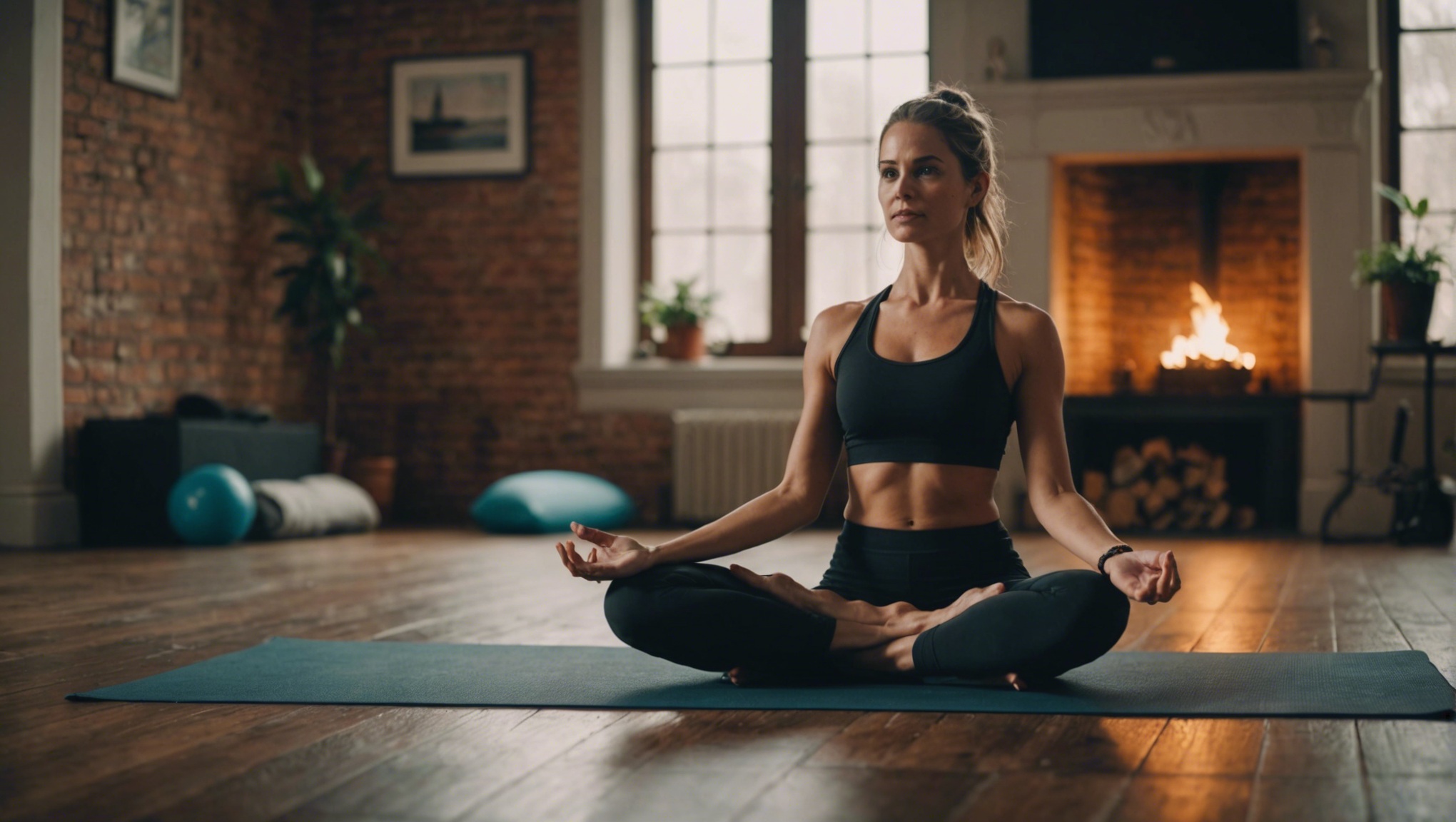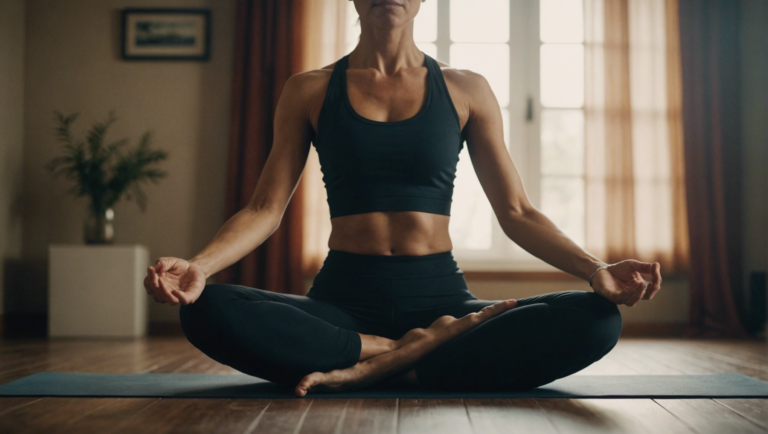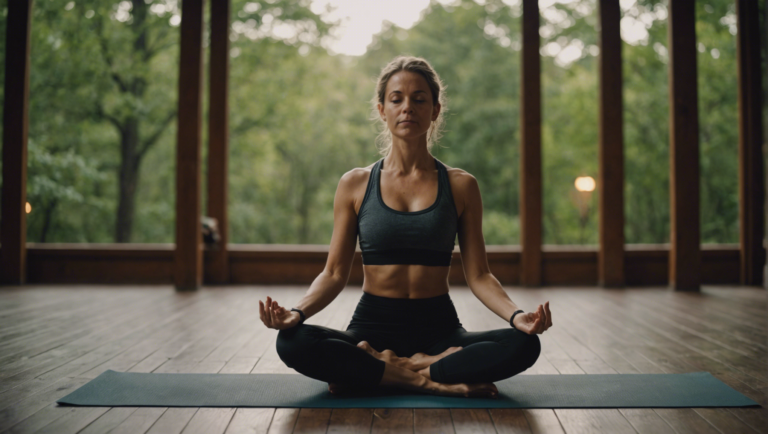Essential Guide: Where To Start Yoga For Beginners
Deciding on Your Yoga Journey: A Starter Guide for Beginners
Embarking on your yoga journey can be an exhilarating but daunting experience. With the vast array of styles, philosophies, and teachings available, knowing where to start your practice as a beginner can feel overwhelming. The essence of yoga transcends physical postures; it’s a holistic discipline that integrates body, mind, and spirit. This guide aims to demystify the process, offering a clear path for newcomers eager to explore the transformative world of yoga.
Unveiling the Perfect Style for You
The first step in initiating your yoga voyage is discovering the style that resonates most with you. Yoga comes in various forms, each with its unique focus and benefits. Hatha yoga, known for its slow-paced and gentle approach, is ideal for beginners seeking to learn the basics of yoga postures and breath control. Vinyasa yoga, on the other hand, is characterized by flowing sequences that smoothly transition from one pose to another, making it suitable for those looking for a more dynamic practice.
Crafting a Personalized Yoga Space
Creating a dedicated space for your yoga practice is essential. This doesn’t necessarily require a large room or an elaborate setup. A quiet corner in your home where you can spread your yoga mat and maintain privacy is sufficient. The key is to have a space that is inviting and distraction-free, allowing you to fully immerse in your practice. Adding elements like candles, incense, or soothing music can enhance the ambiance and support a meditative state.
Setting Realistic Goals and Expectations
As with any new endeavor, setting realistic goals and maintaining reasonable expectations are vital. Approach your yoga journey with patience and self-compassion. Understand that progress in yoga is not linear and varies widely among individuals. Celebrate small victories, such as mastering a new pose or noticing an improvement in your flexibility or mental clarity. Remember, the journey is more important than the destination.
Embracing the Learning Curve
Yoga is an ancient practice with a rich history and philosophy. As a beginner, the array of poses, Sanskrit names, and breathing techniques can seem bewildering. Embrace this learning curve with an open mind and curiosity. Many communities offer beginner-focused classes that cover the fundamentals of yoga, providing a supportive environment to ask questions and learn without judgment. Apps and online resources can also supplement your journey, offering guidance and inspiration.
Building a Consistent Practice
Consistency is the cornerstone of deepening your yoga practice. Aim to incorporate yoga into your routine in a way that feels sustainable and enjoyable. Whether it’s a few minutes each morning to greet the day or a longer session a few times a week, what matters most is regularity. Over time, even the most minimal practice can yield significant benefits, both physically and mentally.
Nourishing Body and Mind
Yoga is more than just physical exercise; it’s also about nurturing your body and mind. Paying attention to nutrition, hydration, and rest is crucial. A balanced diet that fuels your body and ample hydration will enhance your physical performance and overall well-being. Similarly, ensuring adequate rest and adopting mindfulness practices can support mental health and resilience.
Joining a Supportive Community
Yoga thrives on community and shared experiences. Joining a yoga class, whether in-person or virtually, can provide motivation, accountability, and the chance to connect with like-minded individuals. Many yoga studios and online platforms foster tight-knit communities where members can share experiences, challenges, and successes. Engaging with a community can enrich your yoga journey, providing encouragement and deeper insight into the practice.
Embarking on a yoga journey is a profound step toward self-discovery and personal growth. By selecting a suitable style, creating a conducive practice space, setting attainable goals, embracing the learning curve, maintaining consistency, nurturing your body and mind, and joining a supportive community, you lay the foundation for a fulfilling and transformative yoga practice. Remember, yoga is a personal path that unfolds uniquely for everyone. Honor your pace, listen to your body, and stay open to the endless possibilities that yoga has to offer.
Essential Yoga Gear for First-Timers: What You Really Need
Embarking on a yoga journey is an exhilarating step towards personal wellness and self-discovery. For beginners, navigating through the myriad of yoga gear options can be overwhelming, yet certain essentials can enhance practice, making it more comfortable and effective. Understanding what you really need as a yoga first-timer is crucial in setting the foundation for a fulfilling yoga experience.
Essential Yoga Mat: Your Foundation for Practice
A yoga mat is more than just a piece of equipment; it’s your personal space for practice, reflection, and growth. For beginners, selecting a yoga mat with sufficient grip to prevent slipping and adequate cushioning to support joints is vital. Thickness varies, but a mat around 1/8 to 1/4 inch thick often provides a good balance between cushioning and stability. Durability and material are also key factors; eco-friendly materials like natural rubber or TPE (Thermoplastic Elastomer) are worth considering for those mindful of the environment. Moreover, a mat with alignment marks can be particularly helpful for beginners to ensure proper positioning and technique.
The Role of Comfortable Attire in Yoga Practice
Yoga clothing should offer comfort, flexibility, and breathability. As a newcomer, investing in a few high-quality pieces made from moisture-wicking fabrics can keep you comfortable and focused on your practice, not your outfit. Fitted attire is preferable to loose clothing, which can hinder movement or become a distraction during inverted poses. However, ensure that your clothing selection allows a full range of motion without constriction.
Yoga Blocks and Straps: Enhancing Alignment and Flexibility
Yoga blocks and straps are indispensable tools for beginners aiming to improve flexibility, stability, and alignment. Blocks, typically made from foam, cork, or wood, can be used to modify poses, making them more accessible or challenging, depending on your level. Straps, on the other hand, aid in extending reach in poses where flexibility may be limited. These tools not only support the development of proper technique but also help prevent strain and injury by accommodating the body’s current limitations.
The Significance of a Yoga Towel in Hygiene and Stability
Especially for those drawn to more dynamic forms of yoga, such as Vinyasa or hot yoga, a yoga towel is essential. Designed to fit perfectly over your mat, it absorbs sweat, ensuring safety and hygiene during practice. Opt for towels with corner pockets or a non-slip backing to maintain stability during poses. A high-quality microfiber yoga towel can make a significant difference in comfort and focus, keeping the practice space clean and slip-free.
Meditation Cushion: Supporting a Holistic Yoga Experience
While not strictly necessary, a meditation cushion can be a valuable addition for those wishing to incorporate meditation into their yoga practice. A cushion elevates the hips, making seated positions more comfortable and encouraging proper spinal alignment. This support can be particularly beneficial for beginners, making meditation sessions more accessible and enjoyable.
Selecting the Right Yoga Gear: A Personal Journey
Investing in yoga gear is a personal journey that should consider individual needs, practice types, and personal values like sustainability. Quality should override quantity; starting with a few essential, high-quality items is more beneficial than acquiring numerous items of lesser quality. As your practice evolves, so too will your understanding of the gear that best supports your journey.
Embarking on the path of yoga is a transformative experience that combines physical postures, breath control, and meditation. The right gear can significantly enhance this journey, providing comfort, support, and an enhanced practice environment. Through mindful selection and investment in a few key pieces of yoga gear, beginners can lay the foundation for a fulfilling and sustainable yoga practice that grows with them over time. Reflect on these essentials to ensure your yoga journey starts on the right foot, focusing on what truly matters: your personal growth, health, and well-being.
Finding the Right Yoga Class: Styles and Settings for Newcomers
Embarking on the journey of yoga can be both exhilarating and intimidating for newcomers. With a myriad of styles and settings available, beginners might find themselves overwhelmed, not knowing where to start. This comprehensive guide aims to demystify the options, empowering you with the knowledge to find the right yoga class that aligns with your personal goals, preferences, and level of comfort.
Understanding Different Yoga Styles
The first step in finding your yoga path is gaining an understanding of the various styles available. Yoga comes in many forms, each with its unique focus, pace, and intensity.
-
Hatha Yoga: Often recommended for beginners, Hatha Yoga is the foundational discipline from which many yoga styles have evolved. It involves a slower pace wherein poses (asanas) are held for a few breaths. This style is excellent for learners to familiarize themselves with basic postures and breathing techniques.
-
Vinyasa Yoga: Known for its dynamic flow, Vinyasa links movement and breath together, transitioning smoothly from one pose to the next. This style can vary in intensity and is ideal for those seeking a more vigorous workout while enjoying the fluid movements of yoga.
-
Iyengar Yoga: If precision and detail are more your speed, Iyengar Yoga emphasizes alignment and accuracy in poses, often using props like blocks and straps to aid in achieving the perfect posture. This meticulous approach is beneficial for building strength and stability, making it suitable for all levels, including beginners with specific physical concerns.
-
Yin Yoga: On the opposite spectrum, Yin Yoga is a slow-paced style where poses are held for longer periods, typically three to five minutes. This meditative practice targets deep connective tissues, enhancing flexibility and encouraging a sense of peace and relaxation.
Choosing the Right Setting
Once you have a grasp of the different styles, the next consideration is the setting in which you wish to practice. The right environment can significantly influence your yoga experience and commitment to the practice.
-
Studio Classes: Joining classes in a yoga studio offers a structured approach with the added benefit of community and personalized guidance from instructors. Studios often provide a wide range of styles and levels, allowing you to experiment and find the class that resonates with you.
-
Online Yoga Classes: For those with busy schedules or preferring the comfort of their own space, online yoga classes have surged in popularity. They offer flexibility and variety at your fingertips, though it’s essential to ensure you follow the correct form to avoid injury.
-
Outdoor Yoga: Practicing yoga in the fresh air, be it in a park, beach, or your backyard, adds a refreshing element to the practice. Outdoor classes are occasionally offered by studios or community groups, providing a novel way to enjoy yoga while connecting with nature.
Listening to Your Body and Goals
Recognizing your personal objectives and physical condition will further guide your choice. Whether you’re seeking stress relief, physical rehabilitation, or a challenging workout, there’s a yoga style and setting to meet your needs. Listen to your body and respect its limits, especially as a beginner, to foster a sustainable and rewarding yoga practice.
Seeking Expert Guidance
Don’t hesitate to seek advice from experienced yoga practitioners or instructors. They can offer invaluable insights into the nuances of different styles and recommend classes that suit your level and goals. Most importantly, they can provide the encouragement and support needed as you embark on your yoga journey.
Embarking on the path of yoga opens up a world of benefits for both the mind and body. By understanding the diverse styles and settings available, you’re well-equipped to choose the right class that not only matches your preferances but also inspires a lifelong commitment to your well-being. Remember, the best yoga experience is the one that respects your unique journey, encouraging growth, and self-discovery at every step.
Building a Personal Yoga Practice at Home
Cultivating a yoga practice at home can provide a plethora of benefits, including improved flexibility, strength, and mental clarity. However, embarking on this journey requires more than just rolling out a mat; it involves a commitment to self-care and a willingness to explore one’s physical and mental boundaries. Below are essential steps designed to guide beginners through the process of establishing a rewarding home yoga practice.
Crafting Your Sacred Space
Creating an inviting and peaceful environment is crucial for a successful home yoga practice. Choose a quiet corner in your home where distractions are minimal. Ensure the space is clean and clutter-free, as a tidy environment promotes a focused and serene mind. Adding personal touches, such as candles, incense, or soothing artwork, can help enhance the atmosphere and make your practice more enjoyable.
Selecting the Right Equipment
While yoga requires minimal equipment, having the right tools can significantly enrich your practice. A good-quality yoga mat is essential for comfort and stability. Consider investing in props like yoga blocks, straps, and bolsters, which can assist you in achieving proper alignment and deeper relaxation. Remember, the goal is not to accumulate gadgets but to select items that genuinely support your practice.
Establishing a Routine
Consistency is key when building a yoga practice. Designate a specific time of day for your practice that aligns with your natural rhythms and schedule. Whether it’s a rejuvenating morning session to kickstart your day or a calming evening routine to unwind, sticking to a consistent time helps cultivate discipline and establishes your practice as a non-negotiable part of your daily life.
Choosing Your Style and Guidance
Yoga offers a wide range of styles, from the gentle flows of Hatha to the vigorous sequences of Ashtanga. Experiment with different types to discover what resonates with you. Numerous online platforms and apps offer guided classes for all levels, making it easy to find instruction that matches your pace and preferences. Listening to your body and selecting classes that align with your needs on any given day is important for a fulfilling practice.
Progressing at Your Own Pace
One of the beauties of yoga is its accessibility to practitioners of all levels. Begin with foundational poses, focusing on proper form and breath control. Gradually introduce more challenging asanas as your confidence and capabilities grow. Remember, yoga is not a competition; it’s a personal journey towards greater well-being. Celebrate your progress, no matter how small, and be patient with yourself.
Integrating Mindfulness and Meditation
Yoga is as much a mental practice as it is physical. mindfulness and meditation can significantly enhance the benefits of your asanas. Begin or end your session with a few minutes of meditation, focusing on your breath or engaging in a mindfulness practice. This integration deepens the connection between mind and body, fostering inner peace and heightened awareness.
Connecting with a Community
While the focus here is on building a personal practice at home, connecting with a wider yoga community can provide additional support and inspiration. Engaging with online forums, joining virtual classes, or participating in local workshops can introduce you to fellow yoga enthusiasts. Sharing experiences and learning from others can enrich your journey and keep you motivated.
Creating a personal yoga practice at home takes dedication, but the rewards are immense. By following these steps, you’ll not only enhance your physical flexibility and strength but also cultivate a sense of inner peace and resilience that permeates every aspect of your life. Remember, the journey of yoga is one of continuous exploration and self-discovery; embrace it with an open heart and mind.
Overcoming Common Challenges for Yoga Beginners
Embarking on a yoga journey can be both exhilarating and daunting. The synergy of mind, body, and spirit that yoga promises is undoubtedly alluring, yet beginners often find themselves facing a series of common obstacles. Addressing these challenges head-on with practical steps can transform initial hurdles into stepping stones toward a rewarding practice.
Understanding Your Body’s Limitations
One of the first hurdles many newcomers encounter is recognizing and accepting their body’s current capabilities. In our society, where instant results are often prized over the journey, this reality can be hard to accept. The truth is, yoga is not about performance or achieving the perfect pose but rather about engaging in a dialogue with your body and respecting its limits.
Step Forward: Start with gentle, beginner-friendly classes that emphasize understanding your body. Listen attentively to what your body tells you during practice and adjust accordingly. Remember, modifications and props are not signs of weakness but tools for better alignment and deeper understanding.
Navigating the Variety of Styles
Yoga encompasses a myriad of styles, each with its unique focus and intensity. This diversity, while one of yoga’s strengths, can be overwhelming for beginners who are uncertain about where to start.
Step Forward: Research or consult with a seasoned instructor about different styles of yoga to find one that aligns with your current physical fitness, interests, and wellness goals. Give yourself permission to try multiple classes and styles. This exploration is crucial in finding the type of practice that resonates with you.
Cultivating a Consistent Practice
Building a new habit, especially one that requires both physical and mental commitment like yoga, can be challenging. Many beginners struggle with integrating yoga into their busy schedules.
Step Forward: Begin by setting realistic expectations. Even ten to fifteen minutes of yoga a day can be beneficial. Schedule your yoga sessions as you would any important appointment, and gradually increase the duration and frequency of your practice as it becomes a more integral part of your life.
Overcoming Self-Judgment and Comparison
It’s natural to compare ourselves to others, but yoga is inherently a personal journey. Comparing your beginning to someone else’s years-long practice is not only unfair but can also be disheartening.
Step Forward: Focus on your own journey and progress. Remember, every yogi started as a beginner. Use others’ practices as inspiration rather than a metric for judgment. Celebrating small victories and milestones in your practice can significantly bolster your confidence and commitment.
Finding the Right Teacher and Community
The influence of a teacher and the surrounding community cannot be overstated in yoga. A supportive environment and guidance from an experienced, empathetic instructor can dramatically enhance your practice.
Step Forward: Look for teachers or studios with good reputations among beginners. Many communities offer beginner workshops or series that provide a solid foundation in the basics of yoga. Additionally, online forums and social media groups can offer support and advice, broadening your support network beyond the physical space of a studio.
Embracing the Spiritual and Mental Aspects
While many embark on yoga for its physical benefits, the spiritual and mental components are integral to the practice. For some beginners, delving into these aspects can be as challenging as the physical poses.
Step Forward: Allow yourself to be open to the entire experience of yoga, beyond just the asanas (poses). Incorporate meditation, breath work (pranayama), and mindfulness practices from your yoga sessions into daily life. This holistic approach can lead to profound personal growth and well-being.
Yoga is a journey—one that is unique to each individual. Facing and overcoming these common challenges is part of the process, turning barriers into bridges toward a deeper, more fulfilling practice. By approaching yoga with patience, openness, and self-compassion, beginners can lay down a solid foundation for a lifelong journey of exploration and discovery within and beyond the mat.
Conclusion
Embarking on a yoga journey opens a world of benefits for both the body and mind, guiding beginners through a transformative process that promotes wellness, flexibility, and inner peace. As we have explored the essential steps to starting this path, including deciding on the type of yoga that resonates with you, understanding the minimal gear required, choosing the right class setting, establishing a personal home practice, and navigating the common hurdles, it becomes clear that yoga is more than just a series of poses—it is a lifestyle that cultivates self-awareness, resilience, and a deeper connection with oneself.
When deciding on your yoga journey, remember it’s critical to align your practice with your personal goals, physical condition, and interests. Yoga offers a rich tapestry of styles, each with its unique emphasis, whether it’s the strength-focused Ashtanga, the serene flow of Vinyasa, or the restorative peace of Yin. Understanding these nuances allows you to tailor your practice to your needs, making it a deeply personal and fulfilling experience.
The question of essential gear can often overwhelm newcomers, yet the beauty of yoga lies in its simplicity. Far from requiring expensive equipment, yoga asks for little more than a mat and your presence. This minimalistic approach not only makes yoga accessible but also emphasizes that the journey is about turning inward, focusing on the movement and the breath rather than material possessions. Opting for comfort and functionality in your gear supports your practice, allowing you to move freely and focus on the essence of yoga.
Finding the right class is another crucial step for beginners. This journey may take you from the dynamic gatherings at local studios to peaceful sessions in serene outdoor settings, or even to the comfort and convenience of online classes that fit into the busiest schedules. Each setting offers unique advantages, from the community and support of group classes to the personalized pace of home sessions. Experimenting with different environments and instructors helps you discover the optimal learning atmosphere where you feel motivated, comfortable, and supported.
Building a personal yoga practice at home is perhaps the most rewarding step, empowering you to integrate yoga into your daily life seamlessly. This self-directed practice encourages you to listen to your body, adapt poses to your current level, and practice at your own rhythm. It’s also a commitment to self-care, carving out time in your day to focus on your well-being. As you explore your practice, you’ll find it evolves with you, reflecting changes in your physical capabilities, preferences, and life circumstances.
Overcoming the common challenges for yoga beginners requires patience, persistence, and a compassionate approach to self-assessment. Whether it’s navigating initial discomfort, managing expectations, or finding consistency in practice, these challenges are milestones on the path of yoga. They teach resilience, self-kindness, and the importance of progress over perfection. The yoga journey is not about mastering every pose but about learning to flow with life’s ups and downs with grace and balance.
As this guide illustrates, beginning a yoga practice is a journey of discovery, not just of the physical postures but of your inner landscape. It’s an invitation to explore a holistic practice that nurtures the body, mind, and spirit in equal measure. Whether you’re attracted to yoga for its physical benefits or its spiritual depth, the practice offers a flexible, inclusive path that accommodates everyone, regardless of age, fitness level, or background. So, take that first step with an open heart and mind, allowing yoga to guide you toward greater health, peace, and self-discovery. This journey, rich in learning and personal growth, holds the promise of transforming not just your body, but your entire way of being in the world.



